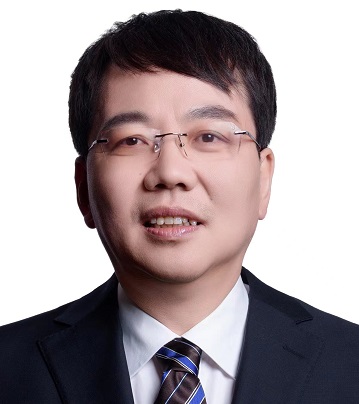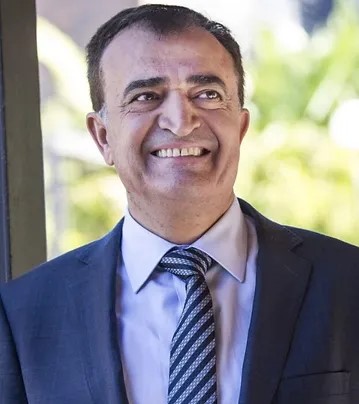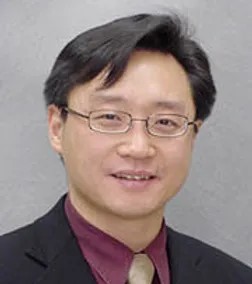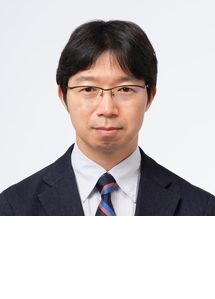Plenary Speakers
Plenary Speakers

Han Ding
Huazhong Univ. of Sci. & Tech., China
Talk Title:
Date & Location:
July 15th 9:10-10:00 am (Tuesday), Conference Hotel Grand Lecture HallAbstract
This talk will introduce the current research activities of robotics in China, especially the Tri-Robot Research Plan of NSFC (National Natural Science Foundation of China). It will discuss the primary scientific challenges and key scientific problems of the plan, mainly focusing on mechanism, perception and control. The talk will also forecast China’s expected breakthroughs and goals in robotics research. Finally, the talk will present recent research results of our group and discuss current and future challenges.
Biography
Han Ding received his Ph.D. degree in Mechatronics from Huazhong University of Science & Technology in 1989. Supported by the Alexander von Humboldt Foundation, he worked at University of Stuttgart, Germany in 1993. He obtained the National Distinguished Youth Scientific Fund in 1997 and was awarded the “Cheung Kong” Chair Professor at Shanghai Jiao Tong University in 2001. He was elected a member of Chinese Academy of Sciences in 2013.
Prof. Ding has long dedicated himself to research in the field of robotics and intelligent manufacturing, and has successfully combined both technologies. He published three academic books and more than 300 journal papers, and licensed more than 200 patents in China.
Prof. Ding is currently the chairman of Academic Committee of HUST and the director of the State Key Laboratory of Intelligent Manufacturing Equipment and Technology. He is also a scientific committee member of the NSFC Tri-Co Robot major research program.

Prof. Gursel ALICI
School of Mechanical, Materials, Mechatronic and Biomedical Engineering
Faculty of Engineering and Information Sciences
University of Wollongong, 2522 NSW, Australia
Talk Title:
Date & Location:
July 15th 10:00-10:50 am (Tuesday), Conference Hotel Grand Lecture HallAbstract
There is a growing need for robust, intuitive, and bidirectional human-machine interfaces (HMIs) to enable seamless interaction between humans and devices for any mechatronic systems involving human-in the loop such as prosthetics, drones, and rehabilitation systems. Effective HMIs must not only identify user intent and physiological states but also translate them into actionable signals to control and guide devices, particularly in human-in-the-loop systems. For widespread adoption, these interfaces should be noninvasive, low power, lightweight, affordable, portable, conformable, adaptive, and easy to use, while supporting intuitive operation regardless of sensor placement.
Typically, HMIs employ electrodes to noninvasively capture biosignals—electrical or mechanical—generated by neuromuscular or neuronal activity from various parts of the body. These signals reflect human intent and are used to control assistive technologies such as prosthetic limbs, wheelchairs, rehabilitation devices, or other mechatronic systems. Through a pipeline of signal acquisition, filtering, amplification, and feature extraction, machine learning techniques are applied to classify intent or gestures, enabling precise command of external devices—thus closing the loop between human and machine.
This plenary talk will provide an overview of current wearable HMI technologies, explore key challenges in their development, and outline future research directions. Real-world applications from the speaker’s research group will be presented, including control of a prosthetic hand, drone, and computer game. The talk will emphasize the critical role of interdisciplinary research in advancing HMIs and bringing especially assistive robotic systems closer to replicating natural human functions—pushing the frontier of human-machine integration in modern mechatronics.
Biography
Gursel Alici (Senior Member, IEEE) received the Ph.D. degree in robotics from the Department of Engineering Science, Oxford University, Oxford, U.K., in 1994.
He is currently a Senior Professor with the University of Wollongong, Wollongong, NSW, Australia, where he holds the position of the Executive Dean of the Faculty of Engineering Information Sciences, and director of Applied Mechatronics and Biomedical Engineering Research (AMBER) Group. His research interests include soft robotics, system dynamics and control, robotic drug delivery systems, novel actuation concepts for biomechatronic applications, robotic mechanisms and manipulation systems, soft and smart actuators and sensors, wearable human-machine interface (HMI) systems, and medical robotics. He has generated more than 400-refereed publications and delivered numerous invited seminars and keynote/plenary talks on his areas of research.
Dr. Alici was a Senior Editor and Technical Editor for the IEEE/ASME Transactions on Mechatronics during 2020–2024 and 2008–2012, respectively. From 2007 to 2017, he was a Member of the Mechatronics National Panel formed by the Institution of Engineers, Australia. He has served on the international program committee of numerous IEEE/ASME International Conferences on Robotics and Mechatronics. He was the General Chair of the 2013 IEEE/ASME International Conference on Advanced Intelligent Mechatronics held in Wollongong, Australia. He was the recipient of the Outstanding Contributions to Teaching and Learning Award in 2010, the Vice-Chancellor’s Interdisciplinary Research Excellence Award in 2013, and Vice-Chancellor’s Award for Research Supervision in 2018 from the University of Wollongong. He was a Visiting Professor with Swiss Federal Institute of Technology, Lausanne (2007, 2010), City University of Hong Kong (2014), University of Science and Technology of China (2015), and University of British Columbia, Canada (2019).

Bin Yao
School of Mechanical Engineering
Purdue University
West Lafayette, IN47907, USA
Talk Title:
Date & Location:
July 16th 9:10-10:00 am (Tuesday), Conference Hotel Grand Lecture HallAbstract
Feedback control design is an art of balancing, trading off various conflicting performance requirements under unavoidable modeling uncertainties/disturbances and hard constraints in implementation (e.g., control input saturation). For effective trade-offs, a holistic approach has to be taken to the modeling, the real-time uncertainty estimation and compensation, and the feedback control with guaranteed robust stability and performance. Such a holistic approach is well reflected in the mathematically rigorous constrained optimization based model compensation (COMC) adaptive robust control (ARC) that has been developed during the past decade in synthesizing performance oriented controllers with built-in intelligences under practical constraints. The developed theory has also been applied to a number of control applications and various mechatronic systems. Significant performance improvement has been seen in the experimental studies of those applications.
This plenary talk first gives an overview of the developed COMC-ARC theory and touches on some specific design issues. Specifically, one of the unique features of the ARC framework is its flexibility in trading off the complexity of the resulting controller and the achievable performance with different levels of abstraction of uncertainties in modeling. On one hand, with the concept of lumped effect of all disturbances/uncertainties for uncertainties characterization as in the widely adopted disturbance observer design (DOB) in mechatronic systems, the resulting ARC controller enjoys similar simplicity and easiness in implementation as DOB, while offering additional benefits due to the ability of the approach in making full use of practically available prior process information such as the bounds of disturbances for a controlled nonlinear estimation and compensation; those benefits include the complete separation of feedback control designs with guaranteed robust performance from the lumped uncertainty estimation/compensation and better handling of hard constraints in implementation. On the other hand, with much less conservative structural uncertainties characterization, the resulting ARC controller is able to push the achievable performance to the limit. The superior performance of the approach over other popular methods in dealing with hard constraints such as the model predictive controls (MPC), the reference governor (RG), and the control barrier function (BLF) is well illustrated by the comparative experimental results on the high-speed/high-acceleration precision motion control of a linear motor stage. The approach is also well tested in a variety of applications, including motor driven electro-mechanical devices, piezo-actuator driven devices for nano-positioning, mobile robots, cable-pulley/cable-conduit driven robotic devices, light-weight mechatronic devices exhibiting significant flexible mode effects, energy-saving and precision control of electro-hydraulic systems, and coordinated/synchronized control of multi-axes systems with redundant drives.
Biography
Dr. Yao received his PhD degree in Mechanical Engineering from the University of California at Berkeley in February 1996 after obtaining M.Eng. degree in Electrical Engineering from Nanyang Technological University of Singapore in 1992, and B.Eng. in Applied Mechanics from Beijing University of Aeronautics and Astronautics of China in 1987. Since 1996, he has been with the School of Mechanical Engineering at Purdue University, where he was promoted to the rank of Professor in 2007. He was also honored as a Kuang-piu Professor in 2005 and a Changjiang Chair Professor at Zhejiang University by the Ministry of Education of China in 2010.
Dr. Yao received a Faculty Early Career Development (CAREER) Award by National Science Foundation (NSF) in 1998 and a Joint Research Fund for Outstanding Overseas Chinese Young Scholars from National Natural Science Foundation of China (NSFC) in 2005. He is the recipient of the O. Hugo Schuck Best Paper (Theory) Award from the American Automatic Control Council in 2004 and the Outstanding Young Investigator Award of ASME Dynamic Systems and Control Division (DSCD) in 2007, the Best Conference Paper Awards on Mechatronics of ASME DSCD in 2012, and a winner of the 4th Nagamori Awards by Nagamori Foundation, Kyoto, Japan, in 2018.
Dr. Yao is a Fellow of ASME and a senior member of IEEE and has chaired numerous sessions and served in a number of International Program Committee of various IEEE, ASME, and IFAC conferences including the General Chair of the 2010 IEEE/ASME International Conference on Advanced Intelligent Mechatronics and the International Program Committee Chair of the 6th IFAC Symposium on Mechatronic Systems in 2013. From 2000 to 2002, he was the Chair of the Adaptive and Optimal Control Panel and, from 2001 to 2003, the Chair of the Fluid Control Panel of the ASME Dynamic Systems and Control Division (DSCD). He was one of the founding members to the ASME DSCD Mechatronics Technical Committee in 2005 and served in various roles including TC Chair. He was a Technical Editor of the IEEE/ASME Transactions on Mechatronics from 2001 to 2005, Associate Editor of the ASME Journal of Dynamic Systems, Measurement, and Control from 2006 to 2009, and the Co-Editor-in-Chief (Mechatronics) of the IFAC J. of Mechatronics from 2022 to 2023.

Kimihiko Nakano
Institute of Industrial Science, The University of Tokyo, Meguro-ku Tokyo, Japan
Talk Title:
Date & Location:
July 16th 10:00-10:50 am (Tuesday), Conference Hotel Grand Lecture HallAbstract
Self-powered active control is a vibration control system that generates control force using regenerated vibration energy. The objective is to achieve active vibration control without relying on external energy input. The electric actuator operates in three modes—regeneration, drive, and brake. Energy harvested in the regeneration mode is stored in an accumulator and subsequently used during the drive and brake modes. A method for designing the active controller based on energy balance analysis is proposed.
This self-powered active vibration control approach is applied to an anti-rolling system for ships, functioning as an active dynamic damper. It is demonstrated that under certain conditions, the generated power exceeds the consumed power. The feasibility and control performance are evaluated through numerical simulations and laboratory experiments. Another application is an active suspension system for trucks. In this case, a method to improve energy efficiency is proposed by combining actuators with regenerative dampers that exclusively recover energy.
The second half of the presentation focuses on energy harvesting systems specifically designed to generate electricity from vibrations. A technique utilizing nonlinear vibrations in multi-stable systems is introduced to enable high power output across a wide frequency range within a limited stroke. In such systems, the coexistence of random and narrow-band oscillations induces transitions between stable states—a phenomenon known as inter-well motion. Performance is investigated using both a bi-stable beam and a multi-stable system rotating along an elliptical orbit. Experimental results show that enhancing transitions between stable states improves energy harvesting efficiency. Power generation performance is also demonstrated through experiments conducted using a vehicle.
Biography
Kimihiko Nakano received his M.S. and Ph.D. degrees in Mechanical Engineering from the University of Tokyo, Japan, in 1997 and 2000, respectively. His doctoral dissertation was titled “Self-powered Active Vibration Control Using Regenerated Energy.” After spending six and a half years at Yamaguchi University, he joined the Institute of Industrial Science at the University of Tokyo as an Associate Professor in 2006 and was promoted to Professor in 2019.
His primary research interests include Dynamics and Control, Vehicle Engineering, Driver Assistance Systems, Automated Driving, and Energy Harvesting.
He is a Fellow of the Japan Society of Mechanical Engineers, a board member of the Society of Automotive Engineers of Japan, and a member of the Engineering Academy of Japan, the Society of Instrument and Control Engineers, and the Institute of Electrical and Electronics Engineers (IEEE).